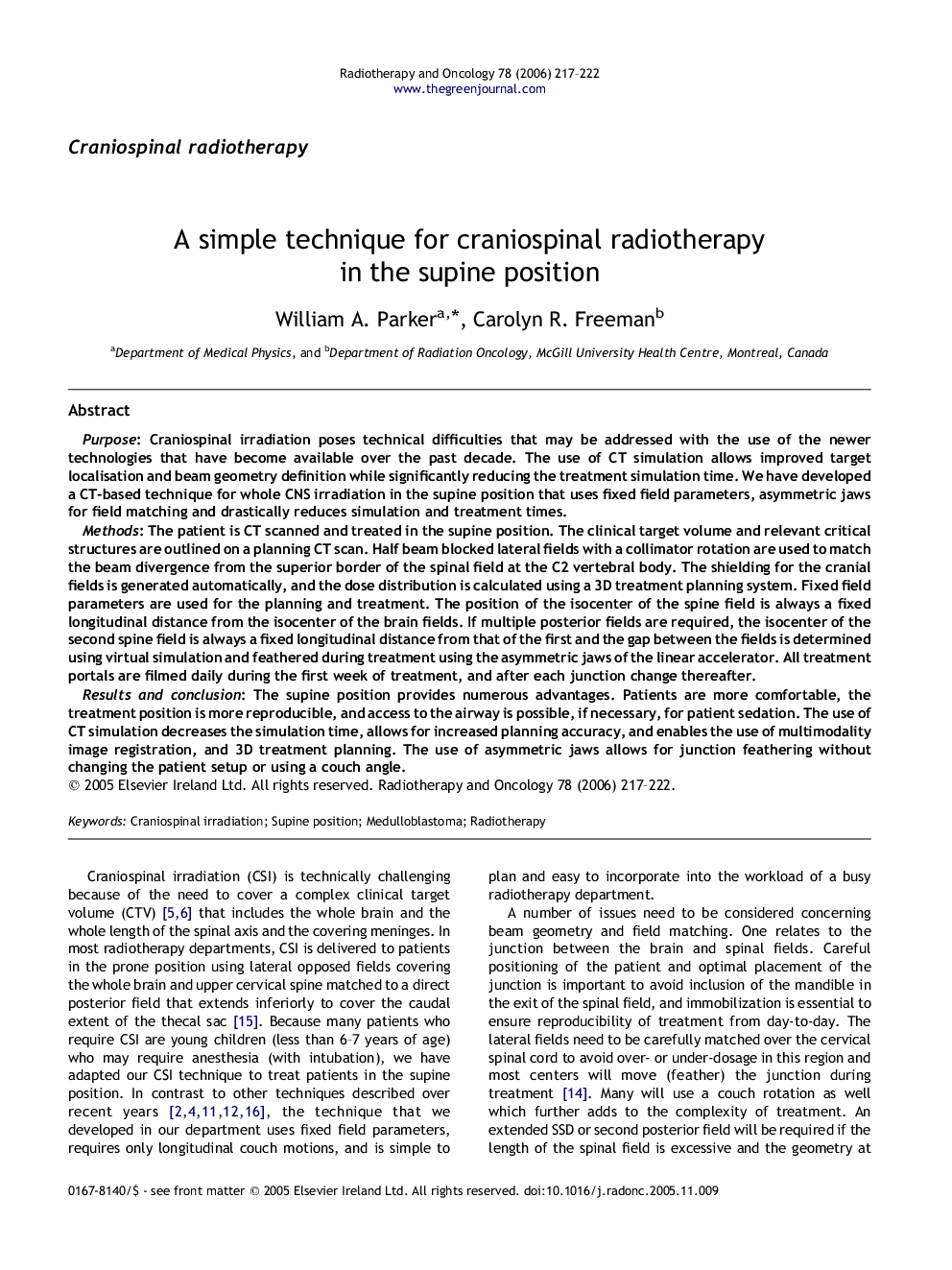| کد مقاله | کد نشریه | سال انتشار | مقاله انگلیسی | نسخه تمام متن |
|---|---|---|---|---|
| 2161677 | 1090929 | 2006 | 6 صفحه PDF | دانلود رایگان |

PurposeCraniospinal irradiation poses technical difficulties that may be addressed with the use of the newer technologies that have become available over the past decade. The use of CT simulation allows improved target localisation and beam geometry definition while significantly reducing the treatment simulation time. We have developed a CT-based technique for whole CNS irradiation in the supine position that uses fixed field parameters, asymmetric jaws for field matching and drastically reduces simulation and treatment times.MethodsThe patient is CT scanned and treated in the supine position. The clinical target volume and relevant critical structures are outlined on a planning CT scan. Half beam blocked lateral fields with a collimator rotation are used to match the beam divergence from the superior border of the spinal field at the C2 vertebral body. The shielding for the cranial fields is generated automatically, and the dose distribution is calculated using a 3D treatment planning system. Fixed field parameters are used for the planning and treatment. The position of the isocenter of the spine field is always a fixed longitudinal distance from the isocenter of the brain fields. If multiple posterior fields are required, the isocenter of the second spine field is always a fixed longitudinal distance from that of the first and the gap between the fields is determined using virtual simulation and feathered during treatment using the asymmetric jaws of the linear accelerator. All treatment portals are filmed daily during the first week of treatment, and after each junction change thereafter.Results and conclusionThe supine position provides numerous advantages. Patients are more comfortable, the treatment position is more reproducible, and access to the airway is possible, if necessary, for patient sedation. The use of CT simulation decreases the simulation time, allows for increased planning accuracy, and enables the use of multimodality image registration, and 3D treatment planning. The use of asymmetric jaws allows for junction feathering without changing the patient setup or using a couch angle.
Journal: Radiotherapy and Oncology - Volume 78, Issue 2, February 2006, Pages 217–222